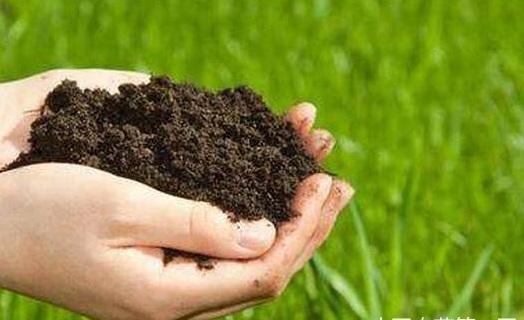Do we know that our soil is healthy? Maybe most people haven't thought about it. We care about how much we invest in farming, but we don't know that with healthy soil, we don't have to rely so much on pesticides and fertilizers to manage farmland. So how do we know if the soil is healthy?

1. Soil Organic Matter
The content of organic matter in soil is very small. In most farmland of China, the content of organic matter is only 0.7% - 1.2%. However, it has a great impact on soil fertility and crop health. The data showed that within a certain range, the content of organic matter was positively correlated with soil fertility level. Soils rich in organic matter are often characterized by good water permeability, good fertilizer supply capacity, and not easy to harden and salinize. The content of organic matter in soil is also closely related to crop yield. According to the survey, the content of organic matter in most of China's land is 0.7%-1.2%. The content of organic matter in northeastern China, which we call "black soil", is about 3%. From the two data, we can see that the improvement of one point is very important for soil fertility. Why don't we do it?
2. Soil microorganisms
As an active component of soil, soil microorganisms, through the exchange of oxygen and carbon dioxide in their metabolic activities, as well as the secretion of organic acids, contribute to the formation of large aggregate structure of soil particles, and ultimately form a real soil. In our farmland, the role of microorganisms is particularly important. Weeds, withered leaves of crops, rotten roots of weeds and feces applied into the soil need microorganisms to decompose and decompose, release nutrients, form humus, thereby improving soil fertility and soil structure. Today, when pesticides and fertilizers are abused in large quantities, microorganisms can also degrade organic pollutants in the soil, reduce the harm of agricultural residues and help the soil to recover health.
3. Trace Elements in Soil
We all know the theory that the barrel effect is that the lowest board on the barrel determines the volume of water in the barrel. This is also applicable in our agricultural production, that is, vegetable production is determined by the least nutrient content, that is, there is a lack of nutrients needed in the soil, even if other nutrients are supplemented in large quantities, it will not achieve good yields.
When we are in agricultural production, we will find that when crops are unhealthy, it is often caused by the absence of one of the medium or trace elements, so we have to specially supplement this element. Imagine if 30% of the amount of fertilizer that we buy to provide N, P, K is used as a supplement to trace elements in crops. Do we need to supplement this element specifically? And when the various elements of the crop are adequately replenished, healthy crops will produce high-quality fruit.
4. Soil acidity and alkalinity
Different plants have their own favorite soil. Planting crops in the South directly in the north and putting them in Greenhouse in time to provide the same heat. If the soil is still the soil in the north, it will not grow very well. That is because each crop has its own favorite acidity and alkalinity. In acidic soils, phosphoric acid in soils is easily bound with iron and aluminum to form insoluble substances, which affects the absorption of phosphorus by vegetables. Potassium and calcium are easily replaced by excessive hydrogen ions and wetted out. In addition, the solubility of trace elements such as copper, zinc, manganese and boron in acidic soils increases. If the addition of trace element fertilizers is added, crops will probably suffer. In alkaline soil, water-soluble phosphate is easy to combine with calcium to form insoluble calcium phosphate, which reduces fertilizer efficiency. It also fixes iron, zinc and other elements, affecting the absorption of crops.
5. Salt
If chemical fertilizer is continuously applied to the soil, the residue of chemical fertilizer will remain in the soil, and the total salt content of the soil will increase. If the total salt content of the soil reaches a certain range, the soil will tend to salinize. At the same time, because of the increase of total salt content, the concentration of soil solution is too high, which will directly affect the growth of vegetable roots. Salt in the soil can reflect the content of mineral elements in the soil. More importantly, we can see whether our soil is healthy and suitable for planting crops. If the soil salinity is too high, light crops will grow poorly, and serious crop death will occur.
6. Hazardous Substances
There are not only various nutrients and beneficial microorganisms in soil, but also many harmful substances, such as heavy metals. These substances accumulate in the soil, which is bound to harm vegetables and affect vegetable growth. Heavy metals not only affect the activity of soil microorganisms, but also antagonize some elements, and also affect the absorption of certain elements by plants. For example, Zn, Ni, Co and other elements can seriously hinder plant phosphorus uptake, arsenic can affect plant potassium uptake, As can directly poison root system, inhibit root growth, or even rot, affect root uptake of nutrient elements, hinder water transport, interfere with enzymatic reactions.
Contact: Mr. Ma
Phone: +86-0374-5699688
Tel: +86-0374-5699688
Email: [email protected]
Add: Fine Chemical Industry Park, Jianan District, Xuchang, Henan, China